|
OPPORTUNITIES
Join a Photographic Expedition
to the Amzon Rainforest
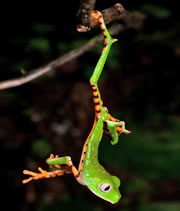
Purchase Photographic Prints
and Support Our Work
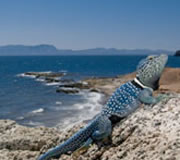
|
The Work
Field Methods
The field procedures consist largely of transect methods. With these techniques, trails are 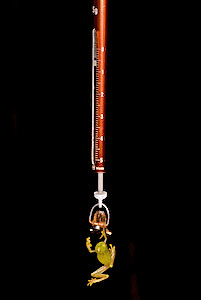 walked and every individual reptile or amphibian is recorded. Various data are collected with individuals, including date, time of day, temperature, and weather, all of which may influence animal activity. Ecological data are also collected, which include habitat, plant species, substrate, disturbances (grazed, distance to road, etc.) and global positioning system coordinates. See the TRANSECT project page for more information about our study protocol. Any animals that are not identified in the field are brought back to the station houses (see "Lab Work", below). walked and every individual reptile or amphibian is recorded. Various data are collected with individuals, including date, time of day, temperature, and weather, all of which may influence animal activity. Ecological data are also collected, which include habitat, plant species, substrate, disturbances (grazed, distance to road, etc.) and global positioning system coordinates. See the TRANSECT project page for more information about our study protocol. Any animals that are not identified in the field are brought back to the station houses (see "Lab Work", below).
Field Training
link
After arriving at the first reserve, participants will have an hour to settle in their rooms, and be ready for the first briefing. In this meeting, volunteers will be introduced to the local staff who will be working with them in the field and in logistic support at the reserve. This briefing will include general information about the reserve, and the flora and fauna that we expect to see. We will also talk about field techniques on how to look for reptiles and amphibians on the trail, what to do when an animal is spotted, how to handle the animals after they are collected, and how to record the necessary data about the animal. Participants will have practical training during the hikes.
Some topics covered by workshops and informal discussions will include:
- Overview of logistics (sleeping, shower, laundry, meals, etc.)
- Objectives of the project, and methods involved
- Summaries of major findings
- Teams and schedule
- Time-off activities
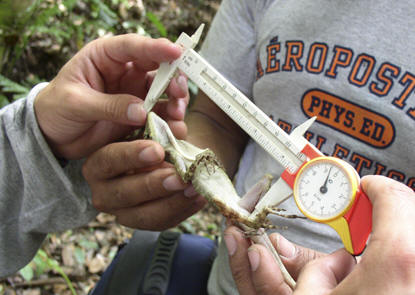
Safety
There are substantial risks associated with the rainforest as well as with handling reptiles and amphibians. Participants are briefed on safety and risks both prior to travel and during the expedition. Participants will not handle any snake without being cleared to do so by field leaders, and will not handle venomous species under any circumstances.
Participant Assignments
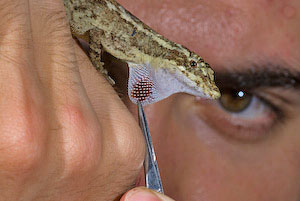 The most important asset that a non-specialist assistant possesses is a good set of eyes. The field work largely consists of continually scanning trees, vines, leaf litter and water for signs of life. The more eyes the better. Everyone will be helping with animal handling, measurements, and note taking. You may also help with species descriptions, identifications, preservation, and photography. Many tasks may be started with minimal experience, although some tasks will be left to the group leaders. The most important asset that a non-specialist assistant possesses is a good set of eyes. The field work largely consists of continually scanning trees, vines, leaf litter and water for signs of life. The more eyes the better. Everyone will be helping with animal handling, measurements, and note taking. You may also help with species descriptions, identifications, preservation, and photography. Many tasks may be started with minimal experience, although some tasks will be left to the group leaders.
While working transects, we generally work in teams of 3-6 people, each specializing on a particular task, including:
- Data recording
- Global Positioning System (GPS) coordinates
- Measuring habitat characteristics, such as perch height
- Photography
- Animal transport
Tasks will rotate on a nightly basis, and everyone will get the chance to perform each task (except for photography, which is reserved for a specialist). 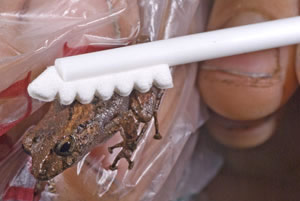
Lab Work
We will be setting up an impromptu laboratory at each of our study sites. Each will serve as a base of operations for "processing" animals. This consists primarily of collecting data that will aid in the identification of a given animal to species. Data will be recorded with the IDENTIFY database system along with measurements, photographs, and DNA samples.
On some occasions, when we find a species in the field that we cannot identify, some specimens may be taken for potential new species descriptions. This requires humane euthanasia with overdose inhalation of isoflorane gas (the same used on pets for surgery), and preservation in formalin. A tissue sample is taken and stored in alcohol which preserves its DNA for genetic studies. On average, we will take between 10 and 30 specimens on each trip. Participants will not participate in animal euthanasia or preservation. (See our scientific photography section for why we collect specimens, and how we minimize the number of animals we collect.)
For animals which are not identified in the field, we attempt to identify them later from specimens, photographs, and notes taken in the field. However, this process often requires an 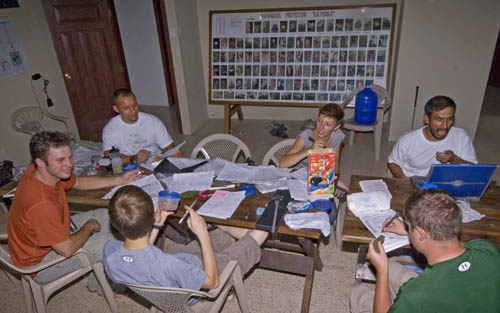 expert in a particular genus of animal, and identification or new species descriptions are made later by these experts. In either case, it is absolutely crucial that a specimen be taken, as this serves as the best documentation of a species' presence, and if stored properly, can exist in perpetuity in a museum collection. Thus, specimens are treated with a kind of reverence by biologists, and form the basis for much future work and discoveries. expert in a particular genus of animal, and identification or new species descriptions are made later by these experts. In either case, it is absolutely crucial that a specimen be taken, as this serves as the best documentation of a species' presence, and if stored properly, can exist in perpetuity in a museum collection. Thus, specimens are treated with a kind of reverence by biologists, and form the basis for much future work and discoveries. |
ECUADORIAN BIODIVERSITY PROJECT
Participate
The Work
Travel
Meet some of our previous participants in our Ecuador program.
See Photo Galleries of our Ecuadorian Study Sites & Field Crews:
Summer 2008
January 2007
May 2007
August 2007
January 2008
|

